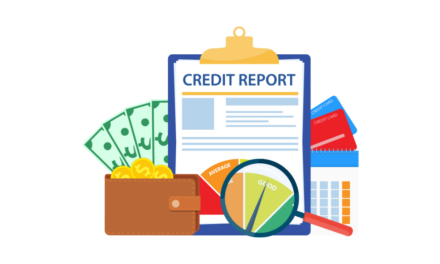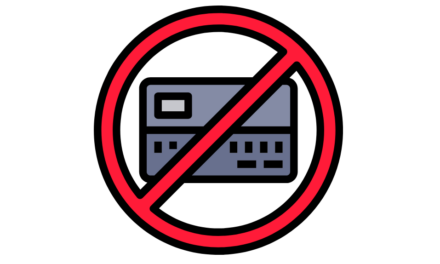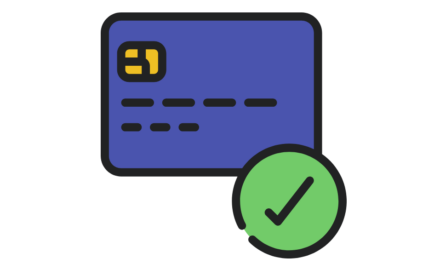In today’s digital economy, where online transactions are increasingly common, ensuring the security of financial transactions is paramount. One of the key components of this security is the Card Verification Value, or CVV, a feature that has evolved to enhance consumer protection against fraud. This article delves into the significance of CVV2, its role in modern payment systems, and the future of emerging technologies.
Understanding CVV: The Basics
CVV stands for Card Verification Value, and it typically refers to a three—or four-digit code found on credit and debit cards. Credit card companies established this security feature to reduce fraud in online and remote transactions. The introduction of CVV codes helped mitigate the risk associated with card-not-present transactions, where physical cards are not swiped at a point of sale.
CVV1, CVV2, and the forthcoming CVV3 all play distinct roles in protecting consumers. While CVV1 is embedded in the card’s magnetic stripe and is used for physical transactions, CVV2 is specifically designed for online and over-the-phone purchases. The recent developments in card security suggest that we are on the brink of even more advanced verification technologies.
What Is a CVV2 Code?
CVV2 is a dynamic security feature essential for conducting online transactions. Unlike CVV1, which is embedded in the magnetic stripe and used primarily for in-person transactions, CVV2 is printed on the card itself, making it readily available for the cardholder to enter during online purchases. This extra layer of authentication confirms that the cardholder is indeed in possession of the physical card.
The Importance of CVV2 in Online Transactions
When consumers purchase online, they often need to input the CVV2 code, card number, and expiration date. This requirement adds a critical layer of security by ensuring that even if a fraudster has obtained the card number, they still need the CVV2 code to complete the transaction. This mechanism helps reduce unauthorized purchases, especially when sensitive card information is compromised due to data breaches or phishing attacks.
How Does CVV2 Work?
The merchant’s payment system prompts the customer to enter their CVV2 code during online transactions. This step is crucial for confirming that the transaction is legitimate. If the entered CVV2 does not match the information associated with the card number, the transaction is typically declined. This safeguard is essential for e-commerce merchants who face higher fraud risks than traditional brick-and-mortar stores.
Merchants do not store CVV2 codes after the transaction is completed, which further enhances security. Even if a merchant’s database is compromised, stolen card information without the CVV2 code is rendered useless for transactions requiring additional verification.
The Role of CVV2 in Preventing Fraud
Mitigating Risks from Data Breaches
As online shopping continues to grow, so does the incidence of data breaches, which expose sensitive card information. CVV2 plays a critical role in mitigating risks associated with these breaches. Because merchants are prohibited from storing CVV2 codes, any stolen card details that lack the CVV2 code cannot be used for fraudulent transactions requiring it. This limitation significantly reduces the potential impact of data breaches on consumers and financial institutions.
A Roadblock for Fraudsters
Fraudsters are continually devising new tactics to exploit vulnerabilities in online transactions. With the introduction of CVV2, they face additional obstacles in their schemes. For example, phishing attacks that trick consumers into providing card details can still result in useless stolen information if the CVV2 code is not obtained alongside the card number.
Encouraging Better Practices
The implementation of CVV2 has also encouraged merchants to adopt better transaction security practices. Businesses are incentivized to implement secure payment gateways and educate their customers about the importance of safeguarding their card information. This shift towards a more security-conscious environment benefits both consumers and merchants.
Differences Between CVV1 and CVV2
Understanding the distinctions between CVV1 and CVV2 is essential for grasping how these security features enhance transaction safety.
- CVV1: This code is embedded in the card’s magnetic stripe and is primarily used during physical transactions where the card is swiped. It helps protect against counterfeit cards by ensuring the cardholder is physically present during the transaction.
- CVV2: Unlike CVV1, CVV2 is not embedded in the card’s magnetic stripe. Instead, it is printed on the card and is used for online and phone transactions where the card is not physically present. This requires the cardholder to manually enter the code, providing an extra layer of verification.
Both codes serve vital functions, but their applications in different transaction contexts highlight the evolving payment security landscape.
The Limitations of CVV2
Despite its benefits, CVV2 has limitations. Recognizing these vulnerabilities is crucial to better protecting against fraud.
Phishing Attacks
One of the most significant threats to CVV2 security is phishing. Fraudsters often use tactics to trick consumers into divulging their card information, including the CVV2 code. Even with the added security of the CVV2, if a fraudster obtains both the card number and the CVV2 through deceptive means, they can still make unauthorized transactions.
Family and Friends
A more subtle risk comes from unauthorized transactions made by family members or friends. If someone has access to the cardholder’s details, including the CVV2, they can make legitimate purchases that the cardholder may later dispute. While this situation highlights the need for vigilance, it complicates the fraud landscape for cardholders.
Lost or Stolen Cards
If a card is lost or stolen, the CVV2 code becomes irrelevant if the cardholder does not act promptly to report the loss. A determined thief could use the CVV2 alongside the card number to make unauthorized purchases. Cardholders should be vigilant and report any lost or stolen cards immediately to mitigate this risk.
Best Practices for Protecting Your CVV2 Code
To further enhance the security of your CVV2 and overall card information, consider these essential practices:
- Never Share Your Card Information: Avoid sharing your card details with anyone, especially through email or phone calls. Be wary of unsolicited requests for your information.
- Be Cautious of Phishing Sites: Always verify the legitimacy of websites before entering sensitive information. Look for signs of authenticity, such as secure URLs and contact information.
- Use Antivirus Software: Keep your devices protected with up-to-date antivirus software to prevent malware infections that could compromise your data.
- Secure Your WiFi Network: Protect your home WiFi with a strong password and avoid using public WiFi networks for financial transactions.
- Monitor Your Account Statements: Review your bank and credit card statements regularly for suspicious activity and report unauthorized charges promptly.
The Future of CVV: Introducing CVV3
As technology evolves, so too does the need for enhanced security measures in payment systems. The introduction of CVV3 represents a significant leap forward in card security. Unlike its predecessors, CVV3 is generated dynamically for each transaction, rendering it virtually impossible for fraudsters to use stolen card information.
How CVV3 Works
CVV3 utilizes cryptographic techniques to create a unique verification code for each transaction. Even if a fraudster obtains the card number, the dynamic CVV3 code will change with each transaction, significantly reducing the risk of unauthorized use.
Adoption Challenges
While CVV3 promises to revolutionize payment security, its widespread adoption faces several challenges. Merchants and card issuers must update their systems to accommodate dynamic verification technologies, which may require substantial investments in infrastructure and training.
Conclusion
The evolution of CVV codes, particularly the introduction of CVV2, has significantly enhanced the security of online and over-the-phone transactions. By requiring consumers to input their CVV2 code, credit card companies have added an essential layer of authentication that helps deter fraud. Although not entirely foolproof, CVV2 codes safeguard cardholders against unauthorized transactions.
As we look to the future, advancements like CVV3 promise to bolster transaction security through dynamic verification methods further. However, consumers must remain vigilant against evolving threats such as phishing scams and malware attacks that can compromise their card information, including CVV2 codes. By staying informed and adopting best practices for card security, consumers can better protect themselves in an increasingly digital world.










